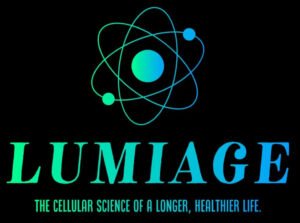
Introduction – Rethinking Heart Health
For decades, medical science believed that the heart cannot repair itself. The prevailing notion was that the number of heart muscle cells (cardiomyocytes) remains fixed after birth, and that any damage, such as a heart attack, is largely irreversible. Similarly, bone marrow stem cells were thought to only produce blood cells and could not contribute to repairing the heart.
Recent discoveries, however, have overturned these assumptions. Research now demonstrates that the heart has an inherent regenerative capacity and that adult stem cells, both naturally circulating and mobilized from bone marrow, play a crucial role in repairing heart tissue and maintaining vascular health.
Stem Cells – Natural Builders of Heart Tissue
Bone marrow-derived stem cells have the ability to migrate to damaged heart tissue and transform into heart muscle cells. Studies showed that injecting these stem cells into areas affected by a heart attack can renew the ventricular wall and significantly improve cardiac function.
Even more fascinating, simply stimulating Endogenous Stem Cell Mobilization (ESCM) to increase circulating stem cells has been shown to enhance cardiac repair without direct injections. This approach allows the body to repair itself naturally and safely, offering new hope for those recovering from heart damage.
The Heart’s Lifelong Regenerative Potential
Using innovative carbon-14 dating techniques, scientists discovered that new heart cells are continuously formed throughout life. Approximately 50% of the human heart regenerates over a 25-year period, and similar renewal occurs in other organs like the pancreas, liver, and lungs. This overturns the old belief that heart cells are static and highlights the body’s incredible natural capacity for repair.
Beyond Cholesterol – Understanding Heart Disease
Traditional cardiovascular health strategies focus heavily on cholesterol as the main culprit of heart disease. However, extensive research has revealed that cholesterol is more of a participant than a cause. The real underlying issue is microscopic arterial lesions that fail to repair.
When these tiny injuries occur in blood vessels, the body naturally calls stem cells to the site to:
- Calm local inflammation,
- Release growth factors that coordinate tissue repair,
- Transform into endothelial and smooth muscle cells, repairing the arterial wall.
If there are too few circulating stem cells, these micro-lesions cannot heal, leading to plaque buildup, arterial hardening, and ultimately, cardiovascular disease.
Endothelial Progenitor Cells (EPCs) – Key to Vascular Health
EPCs are specialized stem cells responsible for repairing blood vessels. Their numbers decline naturally with age, and this decline is strongly linked to cardiovascular risk. Studies show that individuals with higher EPC counts have better vascular function and lower risk of heart disease, while low EPC levels predict vascular complications.
Increasing circulating EPCs is therefore essential for maintaining vascular health and supporting the body’s natural repair mechanisms.
Practical Ways to Support Heart and Vascular Health
- Exercise: Intense physical activity stimulates the release of stem cells from bone marrow and increases circulating EPCs, aiding in tissue repair.
- Nutrition: Natural stem cell enhancers, available as dietary supplements, have been shown to safely elevate EPC levels over time.
- Lifestyle: Avoid smoking, control blood pressure, manage blood sugar, and reduce chronic inflammation to minimize damage to blood vessels.
Together, these strategies not only protect the heart but also strengthen the body’s ability to repair vascular micro-lesions naturally.
Conclusion – Empowering Your Heart Naturally
The heart is not a static organ—it can regenerate and repair when properly supported. Increasing the number of circulating stem cells, especially EPCs, allows the body to heal itself from microscopic vascular damage, improve cardiac function, and reduce cardiovascular risks.
Sources:
- Autologous transplantation of bone marrow cells improves damaged heart function.
Tomita S, Li RK, Weisel RD, Mickle DA, Kim EJ, Sakai T, Jia ZQ. Circulation. 1999 Nov 9;100(19 Suppl):II247-56. - Bone marrow cells regenerate infarcted myocardium.
Orlic D, Kajstura J, Chimenti S, Jakoniuk I, Anderson SM, Li B, Pickel J, McKay R, Nadal-Ginard B, Bodine DM, Leri A, Anversa P. Nature. 2001 Apr 5;410(6829):701-5. - Granulocyte colony-stimulating factor and stem cell factor improve endogenous repair after myocardial infarction. Kanellakis P, Slater NJ, Du XJ, Bobik A, Curtis DJ. Cardiovasc Res. 2006 Apr 1;70(1):117-25.
- Prevention of left ventricular remodeling with granulocyte colony-stimulating factor after acute myocardial infarction: final 1-year results of the Front-Integrated Revascularization and Stem Cell Liberation in Evolving Acute Myocardial Infarction by Granulocyte Colony-Stimulating Factor (FIRSTLINE-AMI) Trial. Ince H, Petzsch M, Kleine HD, Eckard H, Rehders T, Burska D, Kische S, Freund M, Nienaber CA. Circulation. 2005 Aug 30;112(9 Suppl):I73-80.
- Autologous bone marrow stem cell mobilization induced by granulocyte colony-stimulating factor after subacute ST-segment elevation myocardial infarction undergoing late revascularization: final results from the G-CSF-STEMI (Granulocyte Colony-Stimulating Factor ST-Segment Elevation Myocardial Infarction) trial. Engelmann MG, Theiss HD, Hennig-Theiss C, Huber A, Wintersperger BJ, Werle-Ruedinger AE, Schoenberg SO, Steinbeck G, Franz WM. J Am Coll Cardiol. 2006 Oct 17;48(8):1712-21.
- The Therapeutic Potential of Stimulating Endogenous Stem Cell Mobilization. In: Tissue Regeneration – From Basic Biology to Clinical Application. Drapeau C, Eufemio G, Mazzoni P, Roth GD and Strandberg, S. InTech Open, 2012.
- Rapid and selective mobilization of specific stem cell types after consumption of a polyphenol-rich extract from sea buckthorn berries (Hippophae) in healthy human subjects.
Drapeau C, Benson KF, Jensen GS. Clin Interv Aging. 2019 Feb 4;14:253-263. - Evidence for cardiomyocyte renewal in humans. Bergmann O, Bhardwaj RD, Bernard S, Zdunek S, Barnabé-Heider F, Walsh S, Zupicich J, Alkass K, Buchholz BA, Druid H, Jovinge S, Frisén J.
Science. 2009 Apr 3;324(5923):98-102. - Dynamics of beta-cell mass in the growing rat pancreas. Estimation with a simple mathematical model. Finegood DT, Scaglia L, Bonner-Weir S. Diabetes. 1995 Mar;44(3):249-56.
- beta-cell turnover: its assessment and implications. Bonner-Weir S. Diabetes. 2001 Feb;50 Suppl 1:S20-4.
- Liver from bone marrow in humans. Theise ND, Nimmakayalu M, Gardner R, Illei PB, Morgan G, Teperman L, Henegariu O, Krause DS. Hepatology. 2000 Jul;32(1):11-6.
- Multi-organ, multi-lineage engraftment by a single bone marrow-derived stem cell.
Krause DS, Theise ND, Collector MI, Henegariu O, Hwang S, Gardner R, Neutzel S, Sharkis SJ.
Cell. 2001 May 4;105(3):369-77. - Analysis of neurogenesis and programmed cell death reveals a self-renewing capacity in the adult rat brain. Biebl M, Cooper CM, Winkler J, Kuhn HG. Neurosci Lett. 2000 Sep 8;291(1):17-20.
- Atherosclerosis as a disease of failed endogenous repair.
Zenovich AG, Taylor DA. Front Biosci. 2008 May 1;13:3621-36. - Are Endothelial Progenitor Cells the Real Solution for Cardiovascular Diseases? Focus on Controversies and Perspectives. Balistreri CR, Buffa S, Pisano C, Lio D, Ruvolo G, Mazzesi G. Biomed Res Int. 2015;2015:835934.
- Endothelial progenitor cells (EPCs) in ageing and age-related diseases: How currently available treatment modalities affect EPC biology, atherosclerosis, and cardiovascular outcomes.
Altabas V, Altabas K, Kirigin L. Mech Ageing Dev. 2016 Oct;159:49-62. - Endothelial progenitor cells correlate with endothelial function in patients with coronary artery disease.
Werner N, Wassmann S, Ahlers P, Schiegl T, Kosiol S, Link A, Walenta K, Nickenig G.
Basic Res Cardiol. 2007 Nov;102(6):565-71. - Circulating endothelial progenitor cells, vascular function, and cardiovascular risk.
Hill JM, Zalos G, Halcox JP, Schenke WH, Waclawiw MA, Quyyumi AA, Finkel T.
N Engl J Med. 2003 Feb 13;348(7):593-600. - Circulating endothelial progenitor cells and cardiovascular outcomes.
Werner N, Kosiol S, Schiegl T, Ahlers P, Walenta K, Link A, Böhm M, Nickenig G.
N Engl J Med. 2005 Sep 8;353(10):999-1007. - Endothelial progenitor cells participation in cardiovascular and kidney diseases: a systematic review.
Kiewisz J, Kaczmarek MM, Pawlowska A, Kmiec Z, Stompor T.
Acta Biochim Pol. 2016;63(3):475-82. - Reduced number of circulating endothelial progenitor cells predicts future cardiovascular events: proof of concept for the clinical importance of endogenous vascular repair.
Schmidt-Lucke C, Rössig L, Fichtlscherer S, Vasa M, Britten M, Kämper U, Dimmeler S, Zeiher AM.
Circulation. 2005 Jun 7;111(22):2981-7.


